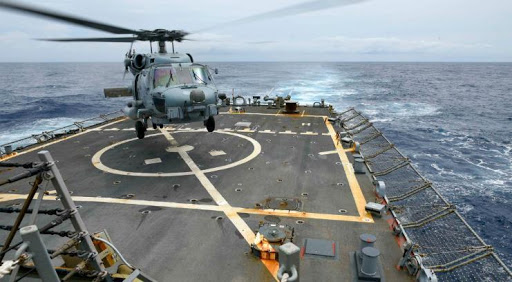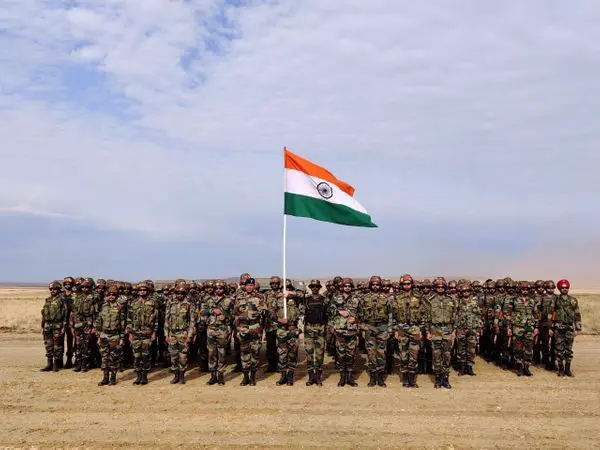Editor's Note:
The writer, Mr. I. Hussain Janjua is a senior media professional and analyst having experience of research & broadcast journalism in different organisations. He is a non-resident fellow of Chengdu Institute of World Affairs (CIWA). (Email: [email protected]; twitter: @ihussainjanjua)
China's growing influence in the Indian Sea has come to be a difficult question for India and in the past few years the Indian Navy has carried out war exercises in the Indian Sea with a number of friendly countries to counter this growing influence.
The latest example of the same link is the recent two-day PASSEX naval exercises in which the Indian and US Navy tested their capabilities in the eastern part of the Indian Sea.
Consolidating synergy & interoperability achieved during Malabar 2020 INS Shivalik with integral helicopter and Indian Navy's Long Range Maritime Patrol Aircraft P8I participated in a Passage Exercise (PASSEX) with US Navy's USS Theodore Rosevelt Carrier Strike Group in the Eastern Indian Ocean Region, the Indian Navy said in an official statement.
"In a first enhancing Jointmanship, Indian Air Force fighters were also included in the exercise affording IAF an opportunity to practice air interception, air defence with US Navy close to Indian Coast,” the statement further said.
The exercise came over a week after US Defence Secretary Lloyd Austin flew into India as part of his three-nation first overseas tour that signaled the Joe Biden administration's strong commitment to its relations with its close allies and partners in the Indo-Pacific region.

During the visit, both sides resolved to further consolidate their robust defence cooperation through deeper military-to-military engagement with Austin describing the partnership as a "stronghold" of a free and open Indo-Pacific.
The Indian Navy will also be part of a French naval exercise in the Bay of Bengal this month. The participating nations also include the other Quadrilateral Security Dialogue (Quad) member countries - Australia, Japan and the United States of America (USA).
Also, this is the first time that the Indian Navy will be part of the France-led war game ‘La Perouse’ in Bay of Bengal, an important development while a French Navy delegation led by French Weight Force Commander Rear Admiral Jack Fiard in the Indian Sea last week called on the Flag Officer Commanding-in-Chief Vice Admiral of the Western Command of the Indian Navy, Hari Kumar in Mumbai, reflecting increasing cooperation between the two countries.
Meanwile, Indian and Russian navies had also carried out a two-day passage exercise (PASSEX) in the Eastern Indian Ocean Region (IOR) in December 2020.
In this regard, C. Uday Bhaskar, Director of the Society for Public Studies and a retired commodore of the Indian Navy says china has emerged as more of a challenge to the Indian Sea. But at the same time India has to be very careful and see what is going on in the Indian Sea region. Over the years, China has ensured that it remains in the Indian sea areas that are politically important to it reduces India's own profile and India's interests in the region.
He also says that China is emerging as a major supplier of naval equipment in the Indian Sea region and has already been the largest supplier of military equipment to Myanmar, Sri Lanka and Pakistan.
The war exercises help in enhancing better cooperation and collaboration between naval forces of different countries, says Commodore Uday Bhaskar.
No doubt China has significantly expanded its engagements in the Indian Ocean region over the past three decades with only objectives of conducting non-combat activities focused on protecting Chinese citizens and investments and undertaking counterterrorism activities etc.
It needs to be recalled that Chinese policy encompasses around the greater good for all and a peaceful and progressive world and Chinese presence in the Indian Sea must not be construed as a threat to the interests of the other countries.
In must understand and learn from history, recent Galwan Valley clash on LAC, that it cannot match the Chinese military might and don’t let its precious resources go waste at the cost of millions of Indians perpetually living below the poverty line and more so in the wake of deadly dents made by the alarming Covid-19 pandemic in every sphere of life.
(ASIA PACIFIC DAILY)
 简体中文
简体中文

